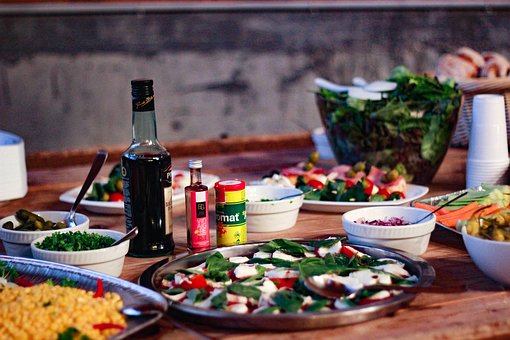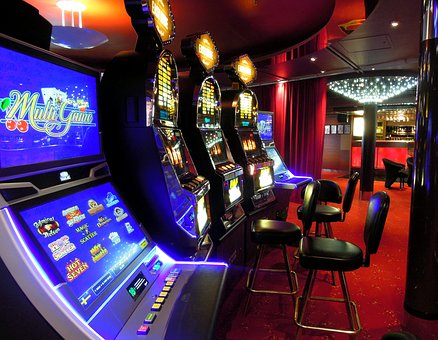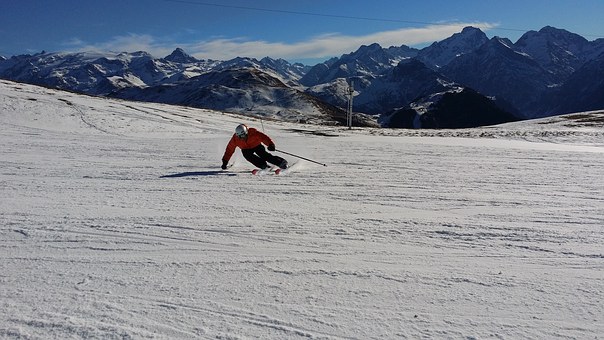This paper discusses the sustainable efforts that The Walt Disney Corporation has made in recent years to reduce their environmental impact and improve sustainability. From food to energy waste, Disney Parks and Resorts has paired up with Walt Disney Imagineering to find innovative ways to conserve energy that not only benefit the guest within the theme parks, but also conserve the environment that the park sits in.
Introduction
When we think of theme parks like Disneyland and Disney World, what sorts of images come to mind? We are reminded of things like Space Mountain, giant turkey legs, and memories of watching the World of Color. However, with all of these great experiences there is also a cost to the environment that hosts them. Everything from solid food waste and to energy waste must be addressed if they wish to continue to make Disney parks the most magical place on earth. For that reason, Disney’s chief executive, Bob Iger, announced Disney’s intention to improve sustainability efforts and set a goal to produce no waste in the future in 2008 [3]. Since then, engineers at Walt Disney have been leading a sustainability effort by taking the extra steps to ensure that Disney theme parks maintain honorable conservation policies [1].
The History of Sustainability
Sustainability is the act of creating and maintaining a world in which humans and nature can productively coexist to support future generations [15]. Disney has always had a long-standing commitment to “the environment, conservation and the natural world” [2]. Since the creation of the first park, Disneyland, in 1955, Walt Disney was an advocate for sustainability [1], and since then there has continued to be a wide emphasis on this subject within Walt Disney Imagineering. So what exactly are “Imagineers”? Imagineers are the engineers of all things Disney and the creative force behind all the magic. There are different Imagineers for different jobs, such as project management, graphic design, mechanical engineering, and industrial and systems engineering. It is a wide-ranging term, and it is through the efforts of many intelligent Imagineers that Walt Disney is able to be so successful.
The moment Bob Iger made the announcement to make Disney waste-free, Imagineers already hard at work to ensure his promises were kept. In the future “90% or more of solid waste [will be] diverted from landfill, thermal waste-to-energy facilities, and incineration without energy recovery [and] 10% or less of solid waste [will] be sent to either landfill, thermal waste-to-energy facilities, or incineration without energy recovery” [4]. This is a significant change as it means that nearly all but 10% of solid food waste will be recycled into other material (See Fig. 1) .
Imagineers have continued in the past years to find new and innovative ways to conserve both the environment and the magic in the world of Disney. Walt Disney Imagineering is actually one of the founders of the Institute of the Environment and Sustainability Corporate Partner Program, otherwise known as the CPP. The CPP is dedicated to create “an interactive relationship between companies and UCLA faculty, researchers, students and other firms to explore the latest business opportunities in environment and sustainability, corporate environmental performance, successful eco-marketing strategy and promotion of companies’ environmental initiatives” [1]. Walt Disney Imagineering believes that as a community leader, it has a responsibility to lead the crowds by maintaining the highest ethical standards. For that reason, in 2009 Disney was recognized by the Boston College Center for Corporate Citizenship and Reputation Institute as a leader in Corporate Social Responsibility [6].
Sources of Waste in Disney
With hundreds of thousands of people visiting its parks every year, Disney always has food and merchandise stocked and prepared for guests. Nearly 3 million churros are sold every year in their paper sleeves [7]. In Walt Disney World Resort alone, more than 75 million Cokes and 13 million bottled waters are sold to guests every year. As for the Disney World theme parks, every year over 1.8 million pounds of turkey legs are sold. It’s easy to see how one theme park, let alone all six Disney theme parks in the United States, could accumulate so much waste in a short period of time [8].
Additionally, due to the increase of guests along with the continuous building and improvement of Disney parks, from 2006 to 2010, there was an increase of 27,786 tons of waste [1]. Just in 2012, Disney had 147,000 tons of solid waste sent to landfill [10]. Another potential source of waste is water. Water is a prominent aspect of many attractions in Disney Parks and Resorts. Especially with the drought and the new water restrictions affecting California, Disneyland needed to take great precautions in water usage and had to work with the Orange County Water District when addressing the use of public water. Just as concerning as water, electricity is one of the most widely utilized resources within the Disney theme parks. Disney has theatrical light shows every day, such as the “World of Color” display located at the Paradise Bay, that require a lot of energy. Especially with the continuous usage of The Disneyland Railroad steam trains and the Mark Twain Riverboats, if dependent on regular fuels, the amount of petroleum diesel necessary every year for these attractions averages around 150,000 gallons [11].
Solutions to Waste
However, Disney Imagineers were not oblivious to these waste issues and they have continuously strived to find alternative methods to reduce waste since Iger’s announcement in 2008. Despite the increase in tons of waste from 2006 to 2010 due to building and development, Walt Disney Imagineering actually managed to reach its waste reduction goals. How did Imagineers do this? One method to reduce waste is seen in the bakery for Disneyland resort guests. Imagineers designed this 10,000 square foot bakery into an eco-friendly one through the use of Energy Star-rated equipment. For the food waste from the bakery, they recycle unused ingredients and expired bread into livestock feed. In the parking lot of the bakery, Imagineers utilized “porous asphalt paving in the parking lot that captures, filters and returns rainwater into the ground, serving as a natural recycling system” [1]. This is just one example of how Walt Disney Imagineers have been implementing never before seen concepts of recycling to further improve the sustainable efforts at Disney.
Other water conservation methods have been implemented due to the issue of overusing local water supply. In 1990, the Walt Disney World Resort located in Florida, used “more than 6 million gallons of reclaimed water— water that is treated, reprocessed and reused — …. to irrigate golf courses, wash buses and clean streets at the parks and resort hotels” [1]. In fact, nearly all of the water used in Disneyland, including the “World of Color”, is recycled water. They are able to do this by diverting used water into the Groundwater Replenishment System, one of the world’s largest water purification projects [12]. While Disneyland Imagineers have the drought in mind, it has already been making early efforts to conserve water. This means that Imagineers have managed to reduce the use of water, yet increase the attendance of guests every year.
As for waste management, Disney Imagineers have implemented a use of recycled items. “Celebration buttons [are] now made of 30 percent recycled steel, PhotoPass plastic cards [are] made of 95 percent recycled content, and merchandise bags [are] made of 100 percent recycled plastic” [1]. As of now, Disney World has over 2,300 collection locations for recyclable material on top of 3 recyclable cardboard collection locations and they intend to add more in the future. Just in 2014, Disney World “recycled 260 tons of plastic and glass bottles, 8 tons of aluminum cans, 1,212 tons of cardboard, 80 tons of mixed paper and 15 tons of shrink wrap” [13]. After seeing this much of an improvement within a couple of years, Imagineers expect to see only a greater, positive growth in the years to come (See Fig. 2).
All rides and attractions at Disney theme parks require some degree of energy, and with that need comes a lot of energy waste as well. Addressing this issue, Imagineers have been thinking of more innovative ways to save electricity in the parks. Walt Disney World Resort was acclaimed for the Best Practice Award in saving electricity during 2013 [2]. Some major programs include the use of energy-efficient LED lights and hydraulic power systems for rides that run only when necessary [13]. Attractions like the “World of Color” also operate on these energy-efficient lights because they “lasts 10 times longer and uses 75 percent less energy than conventional incandescent light bulbs” [11]. As for The Disneyland Railroad steam trains and Mark Twain Riverboat, instead of consuming petroleum diesel, Imagineers had the resourceful idea to make biodiesel from the used cooking oil from Disney Resort kitchens. Along with that, cast members of Disney were encouraged to just make small changes to their everyday schedules, such as making sure to turn off equipment and lights if they were not being used. They have also asked guest to join in the effort by “switching off lights, TVs and ceiling fans, and adjusting thermostats when they leave their resort rooms” [2]. Imagineers are an example to the rest of the world, showing how even one person can play a part in environmental conservation. These are just a few examples of many methods of sustainable tourism that Walt Disney Imagineering is implementing in its parks.
Conclusion
Just from looking at the start of the first Disney theme park until today, Imagineers have taken various extensive and time-consuming steps to improve the production of waste from Disney Parks and Resorts. Many of these changes lead to quite drastic and amazing changes. Some might even call it magic. However, there is really no magic behind these changes. This is just the fruit of many intelligent and caring minds of the Imagineers at Walt Disney. When Walt Disney said, “you can design and create, and build the most wonderful place in the world. But it takes people to make the dream a reality,” he was talking about much more than just the Disney theme parks and knowing this, Disney Imagineers will continue to make his dream a reality.






